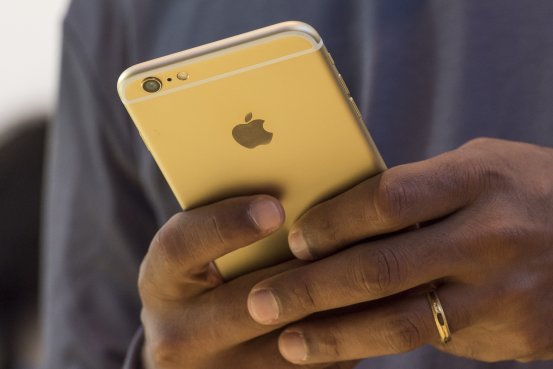Apple ($AAPL) Is Ripe for a Rally
Tech investors are a discerning bunch these days—a harsh reality that is pressuring Apple Inc. [stckqut]AAPL[/stckqut] more than it deserves.
In this yield-starved environment, stock investors are attracted to steady income. This would benefit Apple, except that like other former highfliers, it has been tossed out by investors. The iPhone giant’s shares have slid 6% this year and 21% over the past 12 months. While some of that is justified as iPhone sales have slowed, the selloff also looks overdone.
Much of the bearish thesis is due to weakening iPhone sales, which account for more than half of revenue. The iPad isn’t selling as well as it used to and the jury is out on the Apple Watch. Tech investors are allergic to anemic growth, which explains why the tech-heavy Nasdaq has lagged behind the Dow industrials and S&P 500.
Still, Apple has been punished more than enough. The iPhone slump appears priced in. And while the next iPhone, expected later this year, likely won’t be a significant upgrade, there is optimism that sales growth will soon bounce back. Analysts forecast iPhone unit sales will rise 5% for fiscal 2017, which ends next September.
Apple is the sort of stock that investors love these days. It plans to spend $250 billion on dividends and buybacks by March 2018, which would boost earnings per share and yield. Already, Apple’s 2.3% dividend yield is well above the 10-year Treasury yield.
Apple remains wildly profitable, too. Its $10.52 billion profit in the March quarter easily surpassed combined profits of Alphabet Inc. [stckqut]GOOGL[/stckqut], Amazon.com Inc. [stckqut]AMZN[/stckqut] and Facebook Inc. [stckqut]FB[/stckqut]
Source: Apple Is Ripe for a Rally
Amazon Building Global Delivery Business to Take On Alibaba
In recent weeks, speculation has mounted that Amazon.com Inc. [stckqut]AMZN[/stckqut] plans to launch a global shipping and logistics operation that will compete with United Parcel Service Inc. [stckqut]UPS[/stckqut] and FedEx Corp. [stckqut]FDX[/stckqut]
Asked about reports that the company was leasing planes and had registered an ocean freight booking business, Chief Financial Officer Brian Olsavsky downplayed Amazon’s ambitions last month in an earnings call. He said the company was simply looking to supplement its delivery partners — not replace them — during peak periods like the Christmas shopping season
A 2013 report to Amazon’s senior management team proposed an aggressive global expansion of the company’s Fulfillment By Amazon service, which provides storage, packing and shipping for independent merchants selling products on the company’s website. The report envisioned a global delivery network that controls the flow of goods from factories in China and India to customer doorsteps in Atlanta, New York and London. The project, called Dragon Boat, is proceeding, according to a person familiar with the initiative, who asked not to be identified because the information isn’t public.
Source: Amazon Building Global Delivery Business to Take On Alibaba – Bloomberg
Maximize the effectiveness of your charitable donation

It is a challenge to make sure that your donation is effectively being used. Americans gave $358 billion to charity in 2014, estimates the Giving Institute, a Chicago-based nonprofit that seeks to promote philanthropy. If you’re about to donate at, new ways of thinking about charity can help your gifts go farther.
As I describe in my book, The Confident Investor, you should take care of your fellow man. I strongly encourage you to donate 10% of your after-tax income to help others. This investment in mankind may be your more most important investment. While you may want to be scrooge and hoard all of your earnings for yourself, but the joy and inner peace of helping those less fortunate can be more rewarding than just a few lost dollars.
You should manage your donation much like an investment portfolio, says John List, an economist at the University of Chicago who studies charitable giving. Many donors have long given from the gut, contributing to whichever charities make them feel best. But, says Prof. List, you should instead decide whether you want to spread your bets or concentrate on one or two holdings. Don’t let emotion alone shape your decisions. And, above all, do your homework before you send any money.
On its website, GiveWell provides helpful sets of questions you can ask a charity before you make a donation. So, instead of just writing a check, first ask the staff of the charity questions like these: Exactly what are your programs trying to accomplish? Which published, peer-reviewed studies demonstrate that your approach is likely to succeed? What data do you collect on how satisfied your participants are with your programs? What specific measures do you use to track whether your work is succeeding? How do you follow up later with participants?


